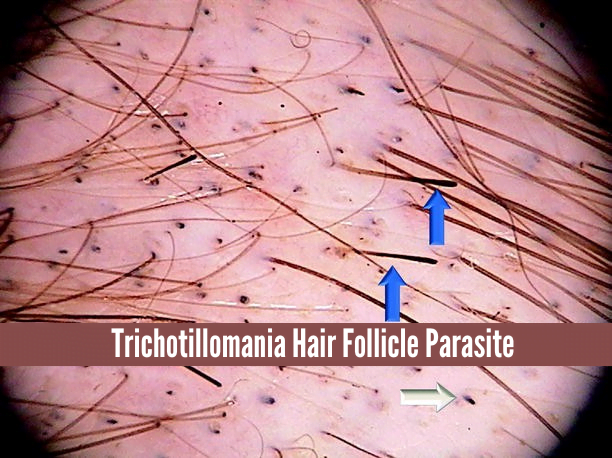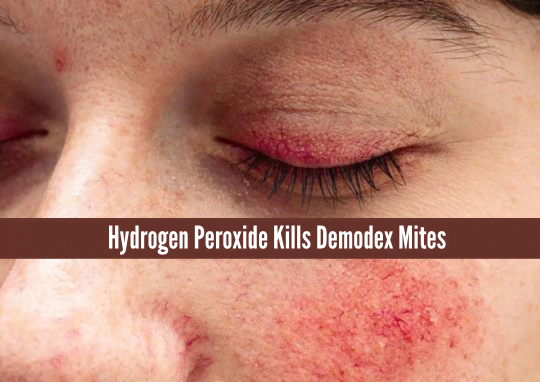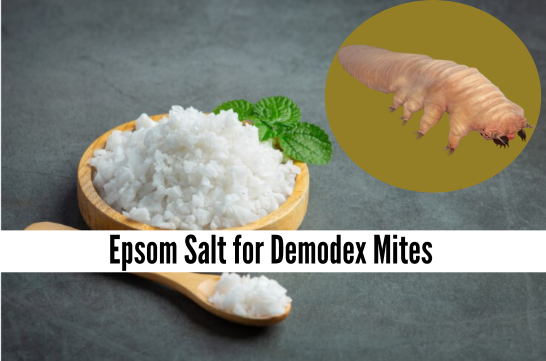Does Vaseline Kill Demodex Mites? A Complete Guide
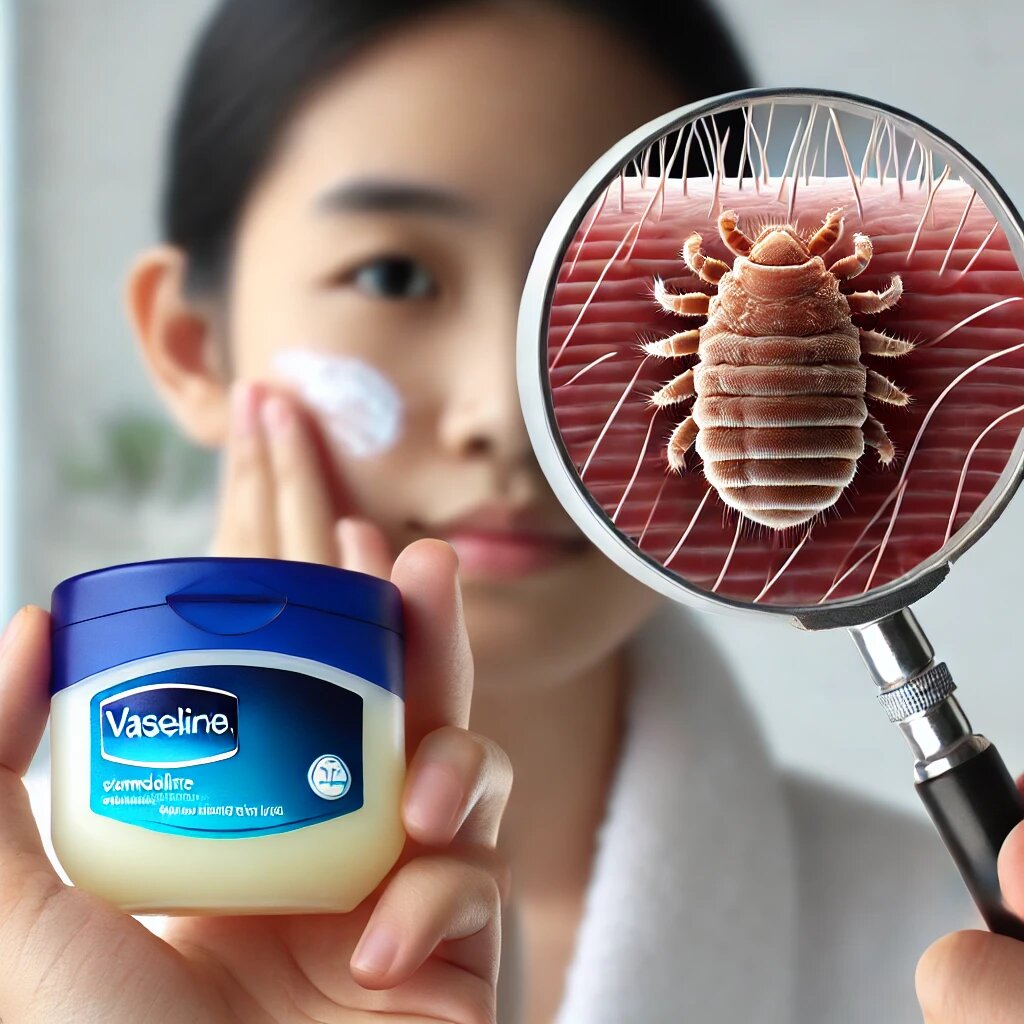
If you have been dealing with skin issues, such as rosacea or persistent acne, you may have come across the term “Demodex mites.” These microscopic creatures live on human skin and can cause problems if their population grows unchecked.
One popular home remedy that often comes up in discussions is Vaseline. But does Vaseline kill Demodex mites? Let’s explore this in detail.
What Are Demodex Mites?
Demodex mites belong to the genus Demodex, which comprises around 65 species. However, only two species, Demodex folliculorum and Demodex brevis, are known to live on humans.
These mites primarily reside in the hair follicles, sebaceous glands, and on the skin’s surface, feeding on dead skin cells and sebum.
Symptoms of Demodex Overgrowth
While most people coexist with these mites without issues, an overgrowth can lead to symptoms such as:
- Itching and redness
- Inflammation
- Acne-like eruptions
- Rosacea exacerbation
Also Read: Hydrogen Peroxide Kills Demodex Mites: Unraveling the Truth
Why Consider Vaseline?
Vaseline, or petroleum jelly, is a common household item known for its moisturizing properties. It’s often used against Demodex mites because it forms a thick, occlusive layer on the skin, potentially suffocating them.
How to Use Vaseline for Demodex Mites
Step-by-Step Guide
- Cleanse Your Face: Start with a gentle cleanser to remove dirt and oil.
- Apply Vaseline: Use a clean fingertip to apply a thin layer of Vaseline to the affected areas.
- Leave It On: Allow the Vaseline to stay on your skin overnight.
- Rinse Off: In the morning, wash your face with a mild cleanser.
Potential Side Effects
Using Vaseline is generally safe for most people, but there are a few considerations to keep in mind:
Clogged Pores: Vaseline can potentially clog pores, leading to acne breakouts in some individuals. If you have acne-prone skin, monitoring your skin’s response and discontinuing use if breakouts occur is essential.
Allergic Reactions: Although rare, some people may experience allergic reactions to petroleum jelly.
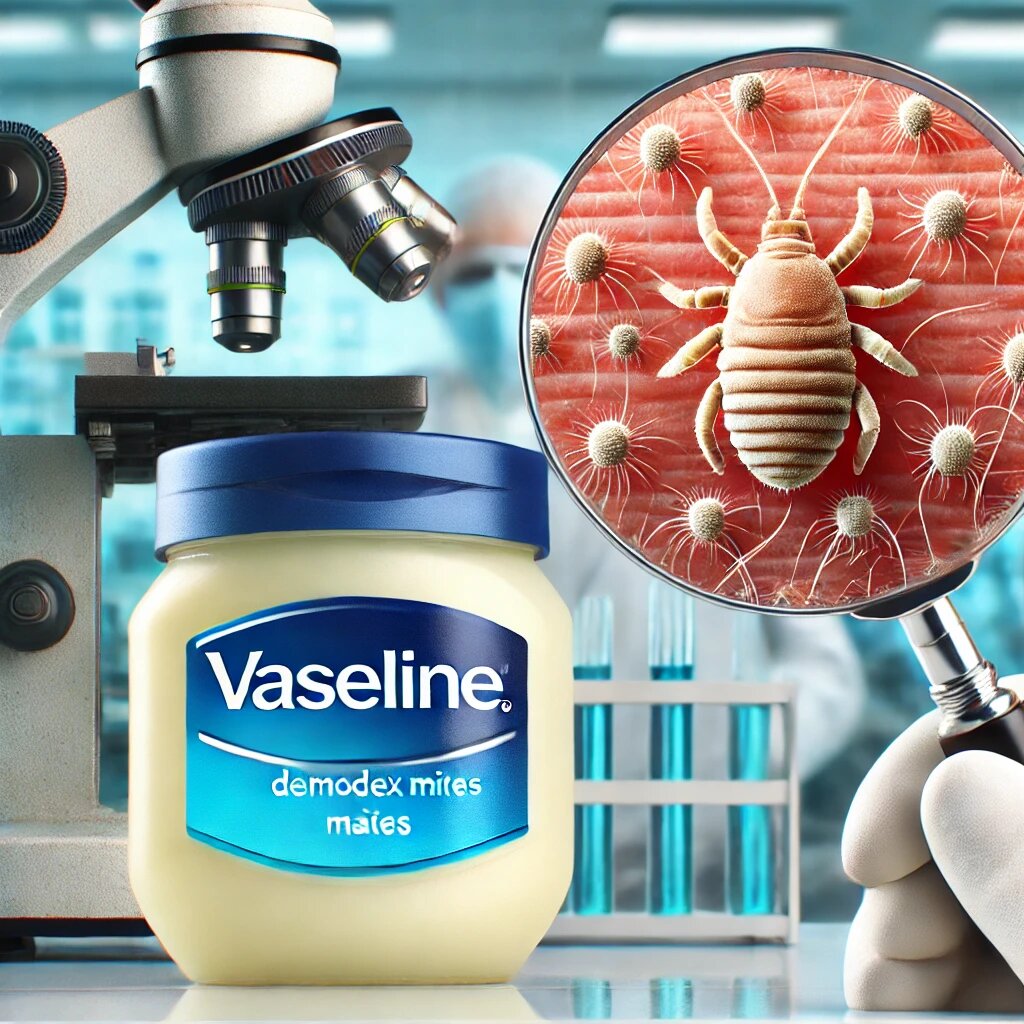
Why Should You Care About Demodex Mites?
Understanding Demodex mites is crucial for anyone invested in skincare. These mites feed on dead skin cells, oils, and hormones.
While they are typically harmless, problems arise when they multiply uncontrollably. This can lead to symptoms like itching, redness, and inflammation, making your skincare routine less effective.
Can Vaseline Kill Demodex Mites?
Vaseline, also known as petroleum jelly, has been purported as a remedy to combat Demodex mites due to its suffocating properties. However, the effectiveness of Vaseline in killing these microscopic creatures is up for debate among experts.
While it may create an inhospitable environment for Demodex mites by sealing off their oxygen supply, there is limited scientific evidence to prove that Vaseline is a reliable solution for eradicating them entirely.
How does Vaseline kill Demodex Mites?
Vaseline is not an insecticide, so it cannot directly kill Demodex mites. However, its thick texture and occlusive properties can suffocate and smother these mites, making it difficult for them to survive on the skin’s surface.
Moreover, Vaseline can also help control the mite population by sealing off their food source, the natural oils our skin produces. Without access to these oils, Demodex mites may not be able to reproduce and thrive on the skin.
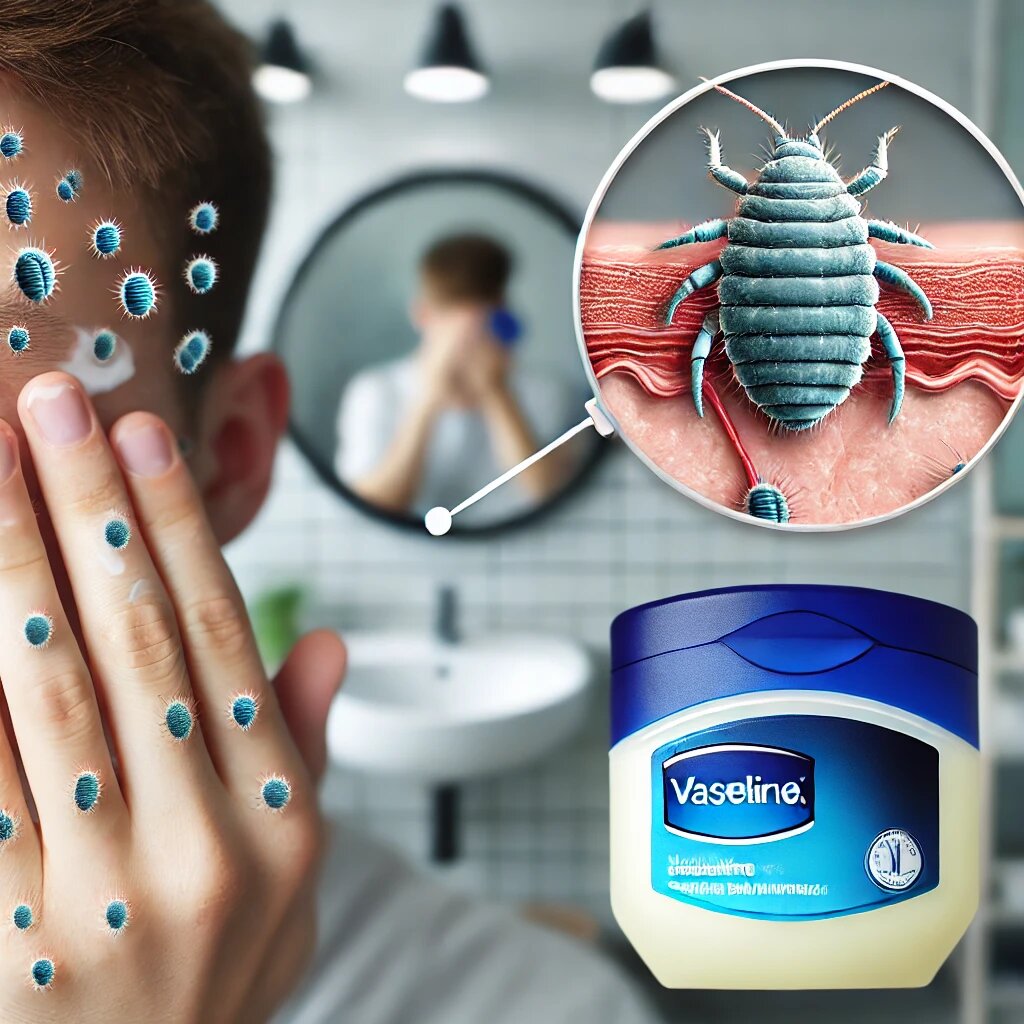
Alternative Treatments for Demodex Mites
While Vaseline may offer some benefits, more effective treatments are available for Demodex mites. These alternatives often have scientific backing and are recommended by dermatologists.
Over-the-Counter Options
Over-the-counter treatments like tea tree oil and sulfur-based creams have shown promise in managing Demodex mites. Tea tree oil has potent antimicrobial properties that can help reduce mite populations.
Prescription Treatments
For more severe cases, prescription treatments may be necessary. Medications like ivermectin and metronidazole are commonly prescribed to address Demodex infestations. These treatments target mites directly, reducing their numbers and alleviating associated symptoms.
Natural Remedies
Natural remedies, such as diluted essential oils and herbal extracts, offer alternative approaches. Oils like lavender, peppermint, and clove have antimicrobial properties that may help manage mite populations. However, results can vary, and using these remedies with caution is essential.
Conclusion
In conclusion, while Vaseline may suffocate and kill Demodex mites on the skin’s surface, it is not a guaranteed or recommended treatment for Demodex infestations. Other more targeted and effective treatments, such as medicated creams or oral medications prescribed by a healthcare professional, are generally preferred. Additionally, maintaining good hygiene practices and keeping the skin clean can help prevent Demodex mite infestations in the first place.
If symptoms of Demodex mite infestation are present, it is essential to consult a dermatologist for proper diagnosis and treatment options. Remember, taking proactive steps towards managing skin conditions can lead to healthier and happier skin in the long run.
Recommendations
- For Mild Cases: Consider using tea tree oil. Make sure to dilute it properly to avoid skin irritation.
- For Persistent or Severe Cases: Consult a dermatologist for prescription treatments like ivermectin.
- General Skincare: Use Vaseline as a moisturizer but not as a primary treatment for Demodex mites.
FAQ:
What Are Demodex Mites?
Demodex mites are tiny parasitic mites that live in hair follicles and sebaceous glands, primarily on the face.
How Do I Know If I Have Demodex Mites?
Symptoms include itching, redness, irritation, and a crawling sensation.
Can Vaseline Really Kill Demodex Mites?
Vaseline may help suffocate Demodex mites, but its effectiveness varies and is not scientifically proven.
How Long Does It Take for Vaseline to Work?
Noticeable improvements can typically be seen within a few weeks of consistent use.
Are There Any Risks to Using Vaseline on My Skin?
Vaseline is generally safe, but some individuals may experience mild skin reactions or allergies. Always perform a patch test first.
